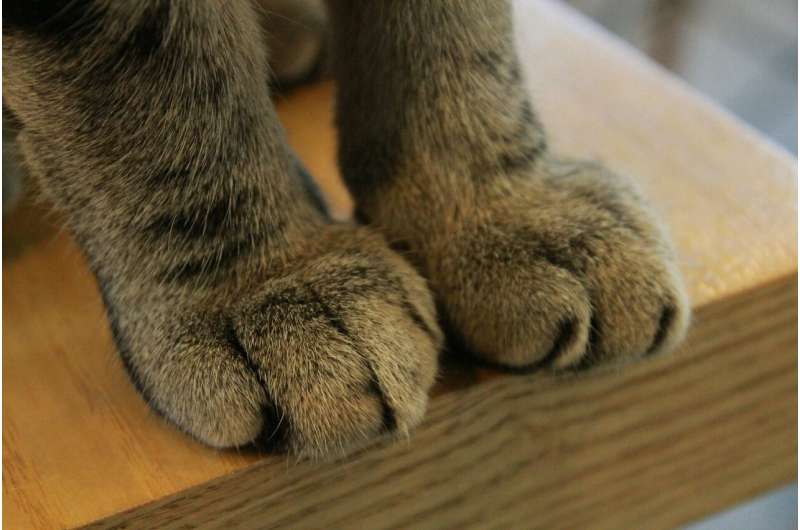Credit: CC0 Public Domain
A quartet of researchers from the University of Tokyo in Japan and the University of Reading in the U.K. has found an association between the evolution of foot posture and body size in mammals. In their paper published in Proceedings of the National Academy of Sciences, Tai Kubo, Manabu Sakamoto, Andrew Meade and Chris Venditti describe their study of foot posture in a large variety of extant mammal species and their subsequent development of a phylogenetic tree.
The researchers note that all modern mammals can be classified by one of three types of foot posture: flat-footed, tiptoed and hooved. Flat-footed creatures include species like humans and mice. Tiptoed species include animals such as dogs and cats and hooved species include creatures such as horses and deer. In this new effort, the researchers began by classifying 880 species of extant mammals by their respective foot-posture type. They note that most species were easy to classify, while some, such as elephants (flat-footed) and rhinos (tiptoed) were not.
Once the team completed the classifications, they plotted the species under study on a family tree that included all mammalian species—they also added some extinct species with known foot types. They were able to see associations in the tree between species based on foot type. In so doing, they found that foot type could be generally associated with body size. Animals with hooves, for example, tended to be large. They also found that tiptoed animals were, on average, twice as big as flat-footed animals, though there were some notable exceptions. People are generally bigger than dogs and housecats, for example. They also found that hooved animals were actually a lot bigger on average than tiptoed animals—57 times as big. The researchers noted that the association between foot type and size posed the question of which came first—did the development of hooves allow certain species to grow bigger, or did hooves come about because larger animals needed them?
The researchers also used their tree to analyze historical specimens and found evidence that suggested the first mammals to evolve likely belonged to the flat-footed category.
More information: Tai Kubo et al. Transitions between foot postures are associated with elevated rates of body size evolution in mammals, Proceedings of the National Academy of Sciences (2019). DOI: 10.1073/pnas.1814329116
Journal information: Proceedings of the National Academy of Sciences
© 2019 Science X Network























